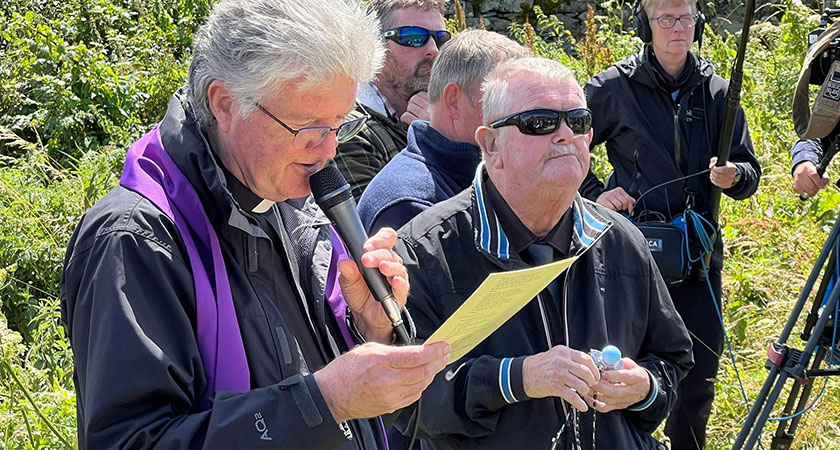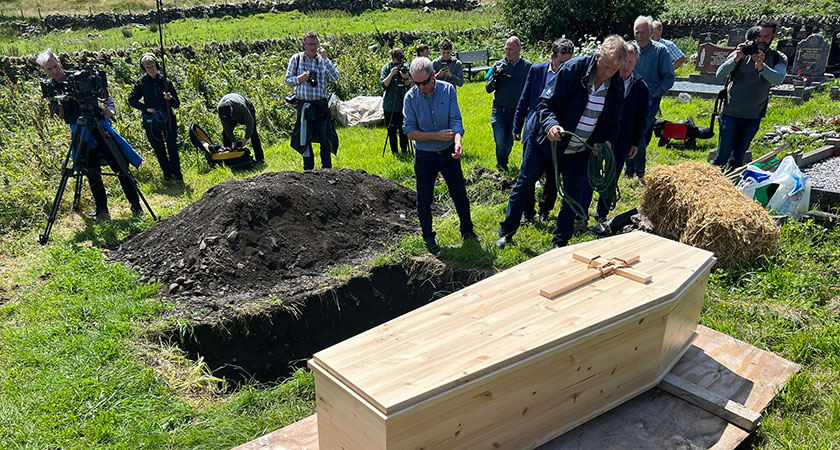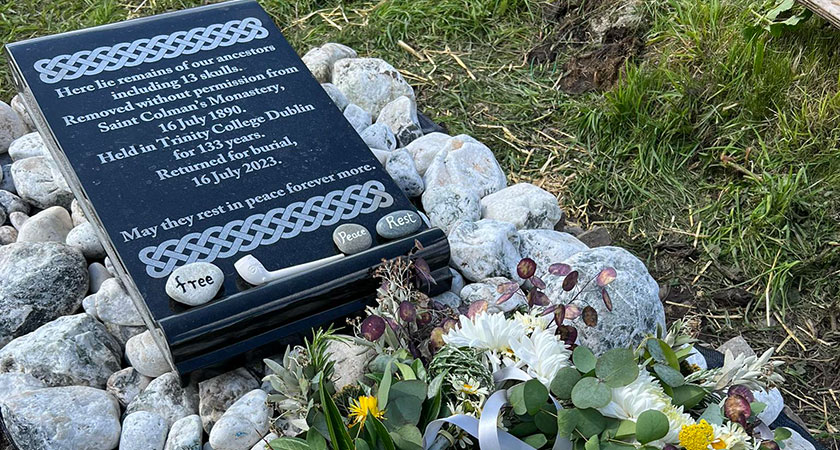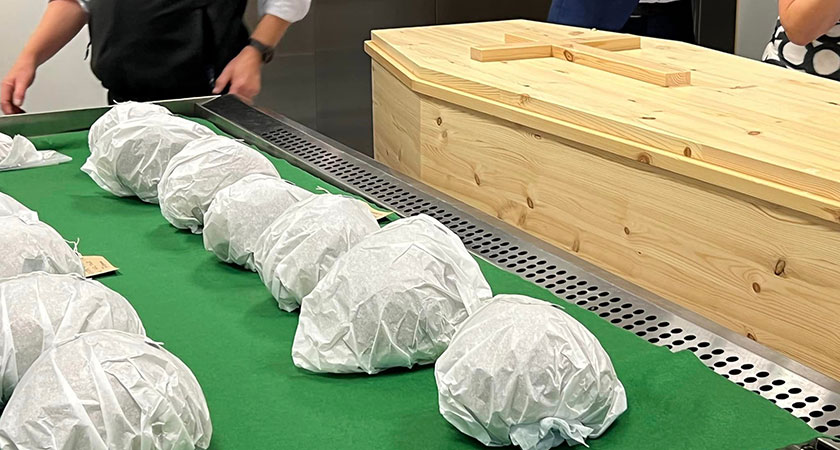HUMAN skulls that were stolen from the Irish island of Inishbofin more than 130 years ago have finally been laid to rest.
The 13 skulls were taken from the island off the coast of Co. Galway in the west of Ireland in 1890.
The skulls have been stored at Trinity College Dublin (TCD) ever since but in February, the university apologised and agreed to their return.
Marie Coyne of the Inishbofin Heritage Museum and Gift Shop has been campaigning for more than 10 years to have the remains returned to the island.
She told The Irish Post that after working for such a long time to bring the skulls back to the island, it felt special to have them back in their proper resting place after 133 years.
"It felt amazing," she said. "It's hard to believe after all the ups and downs, all the mights, ifs and buts that it's actually happened.
"Even though we knew they were coming back, I thought 'something else is going to stop this' right up until we were leaving with them from Dublin in their hearse and they were in our care.
"There was an energy around that night when they came, there was a special feeling of satisfaction that at last the right thing had been done.
"The moments of that whole time last week were special for a lot of people."
Last week, Gardner's Funeral Directors in Galway collected the skulls from TCD and transported them to Athenry in a traditional island coffin crafted by islander Christopher Day, whose great uncle James Cunnan made coffins on the island in the 1960s.
The remains were taken from Athenry to Cleggan last Saturday, where they were carried by ferry to Inishbofin ahead of their burial on Sunday — 133 years to the day when they were taken.
After lying in repose overnight at St Colman's Church, the remains were reinterred following Mass said by Clifden Parish Priest Fr James Ronayne.
“May they rest in peace forever more,” reads a headstone marking the humble but traditional plot overlaid with white stones, not far from where the skulls were taken.
 The remains were buried following Sunday Mass at St Colman's Church (Image: Inishbofin Heritage Museum)
The remains were buried following Sunday Mass at St Colman's Church (Image: Inishbofin Heritage Museum)The partial skeletal remains were taken from St Colman's Monastery on Inishbofin in July 1890 by ethnologist Alfred Cort Haddon and student Andrew Francis Dixon.
Dixon would later become Professor of Anatomy at TCD.
According to Haddon's record of events in his diary, the pair did not seek the community's consent before taking the remains.
The decision to remove them was likely due to the contemporary interest in the fields of craniometry and anthropometry.
Ms Coyne first learnt of the theft of the skulls a decade ago at the Museum of Country Life in Co. Mayo.
An exhibition on Haddon and Dixon by Dr Ciarán Walsh — who has also been working to have the remains returned — featured a photo of the skulls in a cabinet at TCD.
Dr Walsh helped navigate the bureaucracy in their bid, which was ultimately successful in what was the first case overseen by TCD's Legacies Review Working Group.
 The remains were buried not far from where they were taken from 133 years ago (Image: Inishbofin Heritage Museum)
The remains were buried not far from where they were taken from 133 years ago (Image: Inishbofin Heritage Museum)"First of all, they said they couldn't find them or they didn't know where they were," said Ms Coyne.
"But the picture was there so they had to be there — I think they were in the skull corridor.
"Then it was just a matter of getting them to play ball.
"In the last two to three years the campaign really took off but it still was a slow process.
"TCD Old Anatomy didn't seem to want to give them back, whereas I think the Legacies Working Group were trying to work towards a positive solution."
Following the decade-long campaign, TCD announced in February that the skulls, which had been in their possession for 133 years, would be returned.
"I am sorry for the upset that was caused by our retaining of these remains and I thank the Inishbofin community for their advocacy and engagement with us on this issue," said TCD Provost Dr Linda Doyle at the time.
 A marker records both when the remains were taken and when they were returned (Image: Inishbofin Heritage Museum)
A marker records both when the remains were taken and when they were returned (Image: Inishbofin Heritage Museum)Ms Coyne hopes Inishbofin's success can inspire similar campaigns and wants institutions to be more open about what artifacts may be in their collections.
For now, she is delighted that despite claims over the provenance of the remains, they have been returned whence they came.
"They were trying to say in Old Anatomy that they might not even be from Bofin, they might have been pirates," she said.
"That’s not the point — the point is they were taken from their resting place and stolen.
"We don't know who they were, they’re really ancient, about 400 years old.
"But no matter who they were, they shouldn't have been taken from their resting place."
You can find out more about the Inishbofin Human Remains and the wider history of the island by visiting the Facebook page of the Inishbofin Heritage Museum and Gift Shop.


